By Robert F. Dorr
He was widely regarded as America’s best pilot, he was already a recipient of the Medal of Honor, he was commander of the Eighth Air Force caught up in 1,000-plane bombing missions deep into the Third Reich, and he was mad as hell. Lieutenant General James H. “Jimmy” Doolittle was also a gentleman who rarely used harsh language, but when they gave him the battle order for a mission to be flown on February 3, 1945—the bombing of Berlin—Doolittle reportedly uttered an expletive or two. The order told American bombardiers to use the Frederichstrasse Railway Station in Berlin as the aiming point for the day’s air assault on the Third Reich.
To Doolittle, that sounded a lot like bombing a city. But Americans didn’t bomb cities. The British did that, at night. The Americans conducted high-altitude, daylight precision bombing of military and industrial targets, many of which, to be sure, were in the middle of cities.
Doolittle felt he was being ordered to change U.S. strategy and betray American principle. The Eighth Air Force commander got on the phone with his boss, General Carl “Tooey” Spaatz, commander of Strategic Air Forces in Europe (and an immediate deputy of General Dwight D. Eisenhower). No transcript of the conversation exists, and Doolittle did not mention the conversation in an autobiography published decades later.
But a staff officer remembers that hackles were raised and that Spaatz responded to Doolittle’s concern by telling Doolittle, in a not unkind way, to shut the hell up. Moreover, Spaatz reminded Doolittle that Berlin was not a new destination for American bombers and that legitimate targets lay within Adolf Hitler’s capital—Gestapo headquarters, the Air Ministry, railroad facilities, a panzer army on the move, etc.
The report that Germany’s Third Panzer Army was en route from the Western Front to the Eastern and would pass through the railway station was in fact an error on the part of U.S. intelligence. No such movement was taking place. But the Red Army was within 130 miles of Berlin and a punishing aerial assault on the city was seen as a way to help the Soviets advance.
A Big Day for the Eighth
For the 650,000 men under Doolittle’s command—his Eighth Air Force was the largest aerial formation ever assembled—the February 3 bombing of Berlin was to be one of the biggest days of the war. Doolittle was to dispatch 1,437 heavy bombers and 948 fighters to attack the German city.
The attack force consisted of 42 bombardment groups in three air divisions and 15,000 crew members. While 434 B-24 Liberators struck the synthetic oil plant at Magdeburg, 1,003 B-17 Flying Fortresses were to aim their bombs squarely on the city center of the capital of the Third Reich.
At this late stage in the war, the German air force, the Luftwaffe, was no longer the formidable force it had been earlier in the air campaign. Unlike previous missions, this attack on Berlin received little coverage afterward because, for the most part, it lacked the high drama of air-to-air duels between Luftwaffe fighters and Flying Fortresses that had occurred earlier in the war.
Yet the mission was both a turning point in U.S. strategy and a continuation (since 1942) of a kind of warfare that had never been seen before and would never be witnessed again, carried out on a scale that seems, today, almost too much to imagine.
Generals Gave Orders. Young Men Carried Them Out.
First Lieutenant Robert Des Lauriers, co-pilot of a Vega-built Boeing B-17G-75-VE (44-8629) named Purty Chili of the 391st Bombardment Squadron, 34th Bombardment Group at Mendlesham in East Anglia, was quietly focused on pulling his weight as part of a nine-man crew. (A waist gunner had been deleted from traditional 10-man crews in part because the Luftwaffe was no longer likely to attack a B-17 from both sides).
Des Lauriers always surprised himself by being calm just after wake-up for a big mission. “We confronted the cold, the fog, the mist. We especially felt the cold. Asleep, awake, on the ground, in the air, we were always cold,” he said. Today’s journey into the cold, blue vastness above Europe was Des Lauriers’s 12th mission.
Inside a B-17 in flight, it was so cold that Des Lauriers’s pilot forbade crew members from carrying drinking water since it would freeze and become useless anyway. Inside a B-17, men were going forth at, typically, 28,000 feet where, until this war, no one had done battle before. Inside a B-17 you needed oxygen to breathe and heated clothing to resist the sub-zero temperature and then, only then, you also needed to be able to fight.
After they learned where they were going that day, Des Lauriers remembers a fellow crew member saying, “I hope we get Hitler today.”
Technical Sergeant Raymond H. Fredette, togglier of a Douglas-built Boeing B-17G-15-DL Flying Fortress (44-6465) named Fancy Nancy, also at Mendelsham but assigned to the 7th Bombardment Squadron, began the day knowing that someone had scratched “Fat Boy Hector”—referring to his girth and middle name—on the chin turret of his bomber. The previous day, a crewmate had kidded him about his waist size in a way that may not have been meant badly but was not well received. “It was not with great relish that I got up this morning,” Fredette wrote in his diary. This was to be Fredette’s 21st mission.
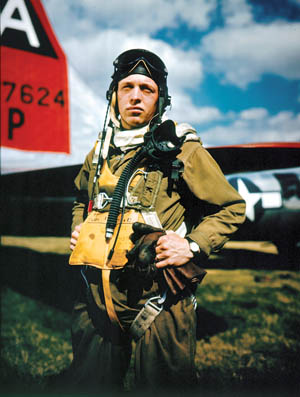
Berlin, 550 miles from East Anglia, was handily within reach of the final wartime model of the Flying Fortress, the B-17G. In fact, the “G model” Fort had been baptized during the Eighth Air Force’s first big trip to Berlin 11 months earlier, on March 6, 1944. With four 1,900-horsepower turbo-supercharged Pratt & Whitney R-1820-97 Cyclone engines, the B-17G was credited with a maximum speed 287 miles per hour but cruised at about 180.
Crew consisted of two pilots, bombardier, navigator, radio-operator/gunner, and four gunners. The togglier was an enlisted man who filled in for the bombardier, usually an officer, and dropped bombs not by aiming them but by following a cue from the aircraft in the lead of the formation.
Combat Crew
Des Lauriers and Fredette, who bunked down a few hundred feet apart in different squadrons and were not acquainted, were thinking about flying conditions. German flak was a worry, too—German fighters less so, because the Luftwaffe had now been largely neutralized by attrition and by far-ranging P-51 Mustangs, the bombers’ “Little Friends.”
Like nearly all of the 15,000 airmen suiting up for the bombing of Berlin, Des Lauriers and Fredette hadn’t been here the previous winter, so this was new—the bone-chilling weather of the British wintertime that brought colds, flu, and frostbitten body parts at high altitude; the electrically heated flying suits that were redesigned repeatedly and still caught fire; a shortage of heat in living quarters; pea-soup fog; howling winds; ice-coated roads, runways, wings and windshields. The forecast for today promised some relief: This Saturday would begin murky, wet, and cold. But over Berlin, at least, it would become CAVU—“ceiling and visibility unlimited.”
It began at 3 am with a flashlight in the face and the word “Up!” mouthed by a charge of quarters (CQ) moving through the Nissen hut with a clipboard.
The ritual followed. First—a close shave, because an oxygen mask would be strapped to the face all day; ablutions, a little hot water if this was a lucky day. Next—chapel, breakfast (real eggs were a harbinger of a difficult mission), and the main squadron briefing. The commander pulled back the curtain. The men gawked at the long, colored yarn stretching from England to the German city they least wanted to see at the end of their route—Berlin.
At briefings taking place at airfields all over East Anglia, men were told the target. Many crew members understood immediately that they were attacking an urban population, breaking U.S. doctrine and betraying Doolittle’s wishes. (The British Royal Air Force, the RAF, had bombed Dresden nightly since 1940 but the American firebomb attack on that city still lay two weeks in the future).
Bombing the “Big B”
With a wartime population that had mushroomed from three to five million and with an area of 1,600 square miles, Berlin was rated as the sixth largest city in the world. Thanks to scores of nocturnal visits by the RAF and a half dozen daytime incursions by Doolittle’s men, the city was partly a desert of rubble and detritus in which everyday services like running water and electricity were strained to the limit, yet it had at least one cabaret that catered to the Nazi military elite and a fully functioning opera house.
The Führer, Adolf Hitler, had spent much of the war in residences far from the capital but was now in the city, using apartments in the Reich Chancellery and spending some nights in his bunker deep beneath Berlin.
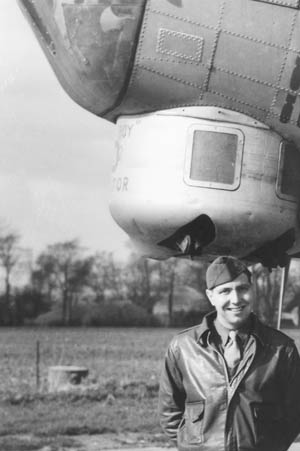
Berlin. The “Big B.” Its antiaircraft defenses stretched across 40 miles of searchlights, flak batteries, decoy fires, decoy marker flares and target indicators, and airfields that still held enough fighters to make approaching the city a risky business. The Allies were relentlessly picking off the finest of the Reich’s pilots, but the Germans never lacked aircraft. Although not as effective as in the recent past, the Luftwaffe had 1,600 warplanes defending the capital.
Hitler was personally familiar with various types of Allied aircraft. In military staff meetings he frequently mentioned the RAF’s De Havilland Mosquito, a reconnaissance aircraft difficult to detect on radar because it was made of wood and speedy enough that it could overfly the Reich with almost total impunity. Hitler also knew a B-17 when he saw one.
Back in England, in the predawn hours of darkness, American-manned Mosquitos of the 653rd Bombardment Squadron, part of the 25th Bombardment Group, were flying weather- and target-reconnaissance missions ahead of Doolittle’s main force. The weather flights were identified by the code name Blue Stocking. While fog and murk shrouded bases in East Anglia until sunrise, Blue Stocking Mosquitos, flown by a pilot and a navigator trained in meteorology, reported correctly that the day was going to be largely clear.
Their work on this morning was part of 1,131 meteorological flights over the Continent, flown by the almost unknown 653rd that, at one time or another reached every target in the Reich. Only when they were finished with their recon would the B-17s enter harm’s way.
War in the Air: The Bombing of Berlin Commences
An early leader in Europe, and at 36 the youngest major general in U.S. history, Curtis Emerson LeMay was the architect of three tactics B-17 crews used over and over against Adolf Hitler’s Fortress Europe: (1) the “combat box,” a formation that concentrated the guns of the B-17s in a defensive screen; (2) the straight-ahead bomb run because, contrary to intuition, you were less likely to be hit by flak if you didn’t dodge; and (3) the concept of a lead bomber and bombardier to signal others when to drop their lethal warload. Bombers not flying lead carried a bombardier or, instead, a togglier like Fredette but no Norden bombsight.
No longer in the European Theater of Operations, LeMay was now managing an air war on the other side of the world, but it was easy to rile up his temper. Just utter the word “raid.” The legend lingered of the day a reporter walked up to him brimming with eagerness and said, “Colonel, tell me about today’s raid.”
LeMay jerked the unlit cigar from his mouth, adopted a stern look, and told the reporter never to use that word again. Almost three years before, in April 1942, Doolittle had led 80 men in 16 medium bombers flying from a carrier deck to bring the war to the Japanese home islands. “What Jimmy and his boys did, that was a ‘raid,’” LeMay said. The events unfolding now were not raids but “full-scale battles, fought in the thin air, miles above the land.”
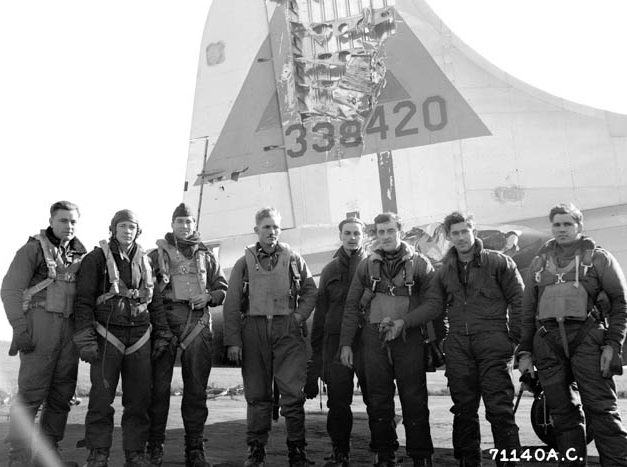
Preparations by the B-17 crews continued. The preflight ritual was the same—walk-around check looking for obvious problems with the planes’ exteriors, turning through the props, manning the planes, completing intercom, oxygen and engine-start checklists. When Fortresses at RAF Mendelsham in Suffolk began starting engines on cue from a flare fired from the control tower, the sound grew to a thunder. The Eighth Air Force’s 122 combat stations were in close proximity, and when over a thousand bombers in 42 bomb groups started their engines, the sound reverberated across the land. Fredette’s diary shows a takeoff time of 8:07 am.
In the glass-covered nose of the Fancy Nancy, togglier Fredette watched one of the bombers in his combat box bouncing up and down. Turbulence was always a problem but Fredette saw this as “a case of a nervous pilot bouncing his crew around.”
Only hours after the mission, Fredette wrote, “As I went to load my cal. .50s in the chin turret I had quite a bit of trouble since the spring forming the bolt that guides the ammunition to the gun’s feedway was disengaged. I ripped up my B-10 jacket as I reached down in the turret to put my right gun in such a condition so that it would fire.
“After doing that, I discovered that someone had loaded the ammunition in backward with the single link of the belt on the receiver. My patience was almost at an end as I changed the ammunition and reloaded. When I found the ammunition for the navigator’s gun put in the same wrong way, I was raving mad. I assisted the navigator in changing his ammunition.”
Soon the massive armada became airborne. Fancy Nancy took off and crossed the North Sea in “an endless procession of planes neatly arranged in battle formation,” Fredette wrote. “The number of bombers was something beyond the imagination.
“We hit the Dutch coast at Bergen an Zee just north of Altmark, carefully flying the plotted course to avoid flak defenses in the vicinity.” In the front of the bomber, looking out at the entire world from the clear glass nose that surrounded him, Fredette had a spectacular view of the bomber formation, the European countryside, and—now—the first puffs of flak straight ahead, bursting in little black clouds that sent tendrils in all directions. It crossed Fredette’s mind that an infantryman would never charge into an artillery barrage, yet B-17 crews flew directly into exploding shells on every mission.
Lamentable Loss
Even so, as in all air campaigns, about half of all aircraft losses were caused by something other than enemy fire. There were plenty of reasons, including the number of war machines occupying the same sector of the sky. Of all the things that scared the hell out of aircrew members like Des Lauriers and Fredette, none was scarier than a mid-air collision.
An almost unimaginable magnitude of sheer force kept a B-17 in flight, to say nothing of a formation of B-17s. Although the bomber stream was at 27,000 feet when it passed over Holland, a young Dutch girl watched her mother remove dishes from a shelf, wrap them in towels, and place them on the floor so they wouldn’t be damaged while their house trembled. It would take three hours for all the bombers to pass overhead. And with so many planes occupying so little space, there were more dangers than a few broken dishes.
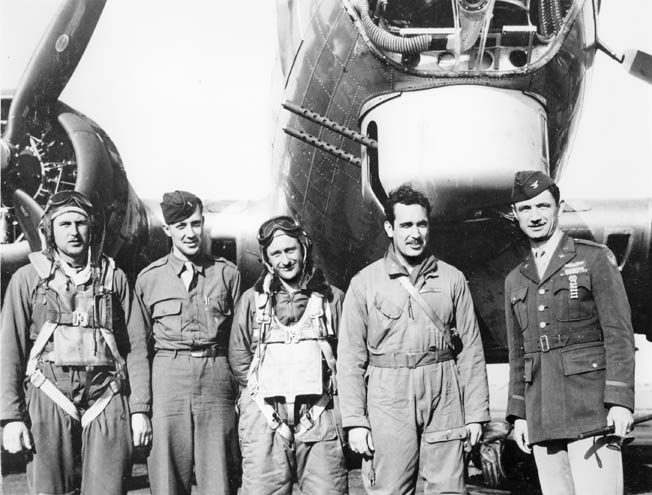
High above the Dutch family, in a Flying Fortress formation of the 388th Bombardment Group—one of the components of Doolittle’s massive force—those forces came together to create a catastrophe. Think about air speed, velocity, mass, and temperature, and two heavy bombers coming together in mid-air possess as much kinetic energy as two railroad locomotives colliding head-on.
Battered by prop wash and turbulence, 1st Lt. Perry E. Powell’s B-17G-95-BO Flying Fortress (43-38697/K8-H)—one of the few planes in the 388th Group that hadn’t yet acquired a name or a caricature on its nose—slewed out of control. Veering off its flight path for reasons that were never learned, and untouched by any other object but pounded by turbulence, Powell’s heavy bomber broke in half. The two halves slammed into B-17G-45-BO (42-97387/also K8-H), with a semi-nude young woman and the name Maude Maria painted on its nose. Piloting the Maude Maria was 1st Lt. John McCormick.
As if torn open by a can opener, the left front side of Maude Maria’s fuselage was suddenly missing a 10-foot slice of metal skin. Others in the formation could see the inside of the aircraft. Many watched in horror as McCormick’s navigator, 1st Lt. Ray R. Woltman, was catapulted into the high, cold, open sky. He was not wearing his parachute.
Caught up in a struggle with the elements in the pilots’ compartment of Maude Maria, with part of his aircraft peeled away and gaping open behind him, McCormick tried to help co-pilot 1st Lt. William Feinstein dislodge the entry (and exit) hatch below them. The parachute belonging to engineer-gunner Tech Sgt. Marvin Gooden had burst open inside the Fortress and billowed around the men, impairing both vision and movement as they struggled to bail out amid howling wind and flying debris.
Once the hatch was gone, McCormick watched Feinstein thrown upward and out, just as the 30-ton bomber careened abruptly to the left. The number two propeller blade slashed into Feinstein’s body and threw him into the wing, tearing off an arm. Feinstein’s parachute never opened.
The violent motion of the aircraft tossed McCormick out of the open exit hatch; togglier Staff Sgt. William G. Logan went out of the aircraft through a door in the nose. McCormick and Logan got good parachute canopies and descended toward their fate as “Kriegies,” or prisoners of war.
Sergeant Joseph D. “Dave” Bancroft, tail gunner on Powell’s plane, was alone at the instant of collision. When his aircraft began to break in half, Bancroft saw a pair of hands, probably the waist gunner’s, reaching toward him just a few feet forward in the fuselage. Bancroft grabbed the hands but was unable to pull the other crew member back to his tail-gun position. The front part of the bomber fell away and the hands disappeared.
Bancroft, alone in the tail section, plummeted downward. He struggled against centrifugal forces to open the tail-hatch door but it was jammed. He kicked, wrestled, pushed and, after almost giving up, the door suddenly fell off and he bailed out. Bancroft was the sole survivor of his aircraft and among only three men out of 18 who survived the collision.
Many weeks later, one of the trio, prisoner of war Logan, would be killed by gunfire from a strafing Allied aircraft while Bancroft stood beside him on a forced march of POWs—and survived. Bancroft wrote, “For this to happen to Logan, a flyer rescued from certain death with other aircrew members of the mid-air crash, then to fall victim after enduring so many bombings and strafing while on the forced march in Nazi Germany, is too difficult and unreal for our limited human understanding. Especially for all of us who knew him and how he would help the weaker POWs keep up with the group so as not to be shot by the guards at the rear of the column. Logan would be there to give of himself, and in the end, that’s exactly what he did––all the way.”
As if impervious to the fate of the 18 men aboard the two Fortresses that had merged in mid-air, the bomber formation continued toward Berlin. Some aboard the bombers had a clear look at the loss of the planes and men, and it stayed with them. But the bomber formation, unable to help, kept going, never slowing down, even as exploding flak shells began to fill the air around the planes.
Someone called out, “Fighters!” Fortress crew members saw the Luftwaffe warplanes nearby but most never saw them close-up. The war had changed since its early days when bomber gunners and Messerschmitt and Focke-Wulf pilots concentrated on killing each other. Now, P-51 Mustangs ranged in front of the bombers and held off most of the Bf-109s and Fw-190s.
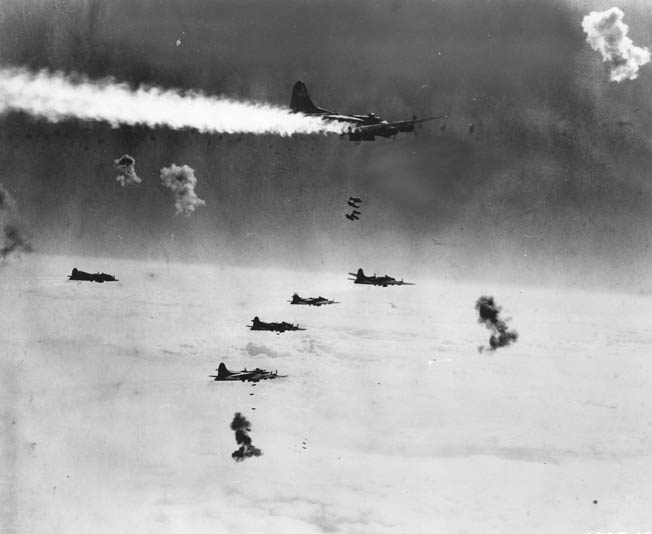
As the first Flying Fortresses pivoted on the Initial Point 10 minutes from the Berlin city center and began their bomb runs—each squadron following a lead aircraft and a lead bombardier—the flak bursts became even more intense.
“Imagine somebody throwing rocks against the side of a metal building and that’s what it sounded like,” said 1st Lt. Robert Des Lauriers, co-pilot of Purty Chili. “The shell blasts and black puffs of smoke came in threes. They bracketed our aircraft, on one side, above us, and then on the other side.”
Bomber Stream
From behind the bombers of Fredette’s and Des Lauriers’s 34th Group, a German fighter flew directly through combat boxes of bombers and ended up in front and to the left of the formation. Said another 34th airman, 1st Lt. Charles Alling, “It did a pirouette on its tail, like a ballet dancer, and then exploded. We flew through the mass of exploding metal, a piece of which tore into our right wing. Somehow all of the planes in our group flew through the remains of the German fighter and survived.”
How long was the parade of bomber boxes marching toward the German capital? When the first wave of Flying Fortresses reached Berlin, the last bomber was still over the Zuider Zee in Holland: The stream of bombers, from one end to the other, was 360 miles long. Group after group arrived over Berlin. Altogether, fully 90 minutes would elapse while the bomber formation passed over the capital.
In the co-pilot’s seat of the lead Fortress, a Vega B-17G-60-GE (44-8379/EP-J) for the 3rd Air Division, Major Robert “Rosie” Rosenthal of the 100th Bombardment Group and pilot Captain John Ernst peered through flak bursts at smoke-covered Berlin.
In the book Flying Fortress, Edward Jablonski wrote: “The flak proved to be murderously accurate over Berlin that day—‘a beautiful day,’ as Rosenthal would later recall it. He was of course referring only to the clear weather. The plane shuddered under the impact of the flak and the air filled with the noises of ripping metal. The number one engine spouted flame, a great white sheet spilling into the air stream behind the wing; the fabric-covered aileron shriveled, exposing the graceful metallic structure.”
Two men were killed in Rosenthal’s Fortress. Thick, white smoke filled the flight deck. Ernst looked at Rosenthal for guidance. “Rosie” gestured to continue, straight ahead. He knew the B-17 would never make it home. He also knew that if his aircraft didn’t bomb accurately, his entire division might scatter its bombs and needlessly kill civilians.
Rosenthal’s Fortress stayed on a steady course until lead bombardier 1st Lt. Eugene E. Lockhart toggled its bombs. Other B-17s in the division followed suit. The bomber was hit a second time. Crew members of other aircraft saw the Fortress lurch upward and then down. Its bomb bay doors closed and reopened.
Rosenthal slid back his window and peeled off to the right, directing the group’s deputy leader to take command. He took the controls from Ernst and headed northeast. A wall of noise surrounded him as the aircraft began tearing itself apart. “Rosie” ordered crew members to bail out.
Rosenthal looked in all directions, listened, and satisfied himself that every crew member had jumped from the Flying Fortress. Still at the controls, Rosenthal put the aircraft on autopilot so it would continue straight and level as long as possible, just in case a straggler was still trying to get out. He pulled his parachute straps tight, fought his way out of the pilot’s seat. The nearest exit was the forward emergency door below and in front of the pilot’s compartment.
Rosenthal fought his way toward that door and did a double take when he saw at the last moment that a crew member was sprawled on the floorboards behind him. He had no way of knowing who it was because the man had been decapitated. There had been 13 airmen aboard Rosenthal’s Flying Fortress. Ten of them survived to become prisoners of war.
The Death of Klettge’s Crew
Of the many groups who participated in the bombing of Berlin that day, the 91st Bombardment Group from RAF Bassingbourn, near Cambridge, had it the roughest. In an apparent mistake, the men had been told there would be no mission on February 3 and had been partying as late as 1 am. Many took off for Berlin without having gotten any sleep. Some were still under the influence or were seriously hung over.
That was not the situation aboard the lead aircraft for the group. This was another relatively new bomber that had no nose art and no name, but the crew was old in experience if not in years. On two dozen missions, this crew had been led by Major Manny Klette, who had a reputation for being daring and brazen but was recognized as one of the best pilots and leaders in the European Theater of Operations.
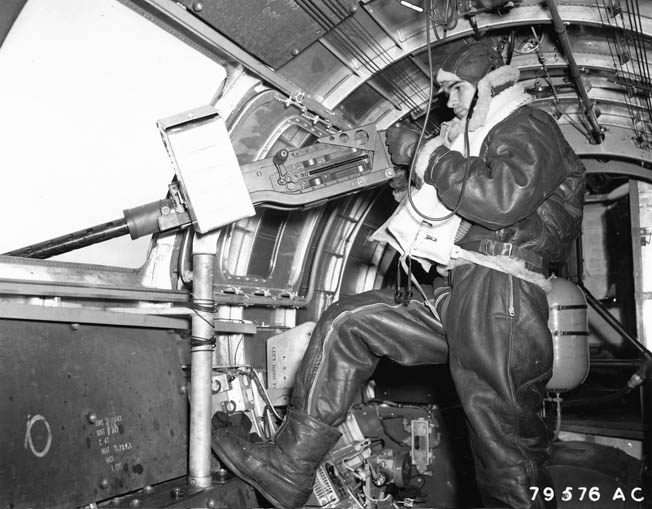
Today, Klette was on furlough in London. Another very experienced and dead serious leader and pilot, Lt. Col. Marvin D. Lord, occupied the co-pilot’s seat where Klette would have been. Lord and the regularly assigned pilot, 1st Lt. Frank L. Adams, had made certain the entire crew of Vega B-17G-20-VE (42-97632/DF-H/R) got plenty of sleep and had a thorough crew briefing.
Lord was a Silver Star recipient from a previous combat tour, was near the end of his second, voluntary tour in bombers, and was a former squadron commander, group staff officer, and lieutenant colonel at the age of 23. He had a wife and baby daughter back home in Milwaukee. His cheerful, upbeat personality was a contrast to the somber Klette. Some who flew with him claimed Klette had a death wish. If he did, he was about to be cheated in a very big way.
At the start of the bomb run, Adams’s bombardier, Captain Nando A. “Tony” Cavalieri, engaged his Norden bombsight; the group would now bomb on Cavalieri’s lead. First Lieutenant Theodore M. “Mike” Banta was watching closely from his B-17G-70-BO (43-37844/DF-K) Yankee Gal.
In an interview for this article, Banta described the tension as bombers passed over the smoke-covered German capital: “As we flew toward the target, each succeeding battery of flak bursts moved closer to us. This is when the sweat begins. Will we reach ‘bombs away’ before the antiaircraft gunners make the final correction that puts their bursts in the middle of our formation?”
Said Banta, “When bombs are released by the Norden bombsight in the lead ship, one of them will be a smoke marker bomb. As soon as the bombardiers in our other ships see this, they will pull a toggle switch releasing their aircraft’s bombs. We bomb as a unit and a tight formation leaves the best diamond-shaped bomb pattern possible.”
Cavalieri released. Banta said, “Immediately after ‘bombs away’ and before lead pilot Adams could start his evasive turn, the lead ship received a direct hit from an antiaircraft shell right where the trailing edge of the wing meets the fuselage. The lead ship was blown cleanly in half. The nose section went immediately into a dive with engines still under power. The tail section appeared to fly along with the formation for a split second and then drifted out of my sight behind my co-pilot’s window. My co-pilot told me that it fluttered back over the top of our rear element and was lost from his sight.”
In an instant, Lord, Adams, and Cavalieri and all of Klette’s crew—one of the most experienced in the Eighth Air Force—were gone. Among the 11 who died aboard 42-97632, the radio operator was on his 79th mission, the engineer on his 81st.
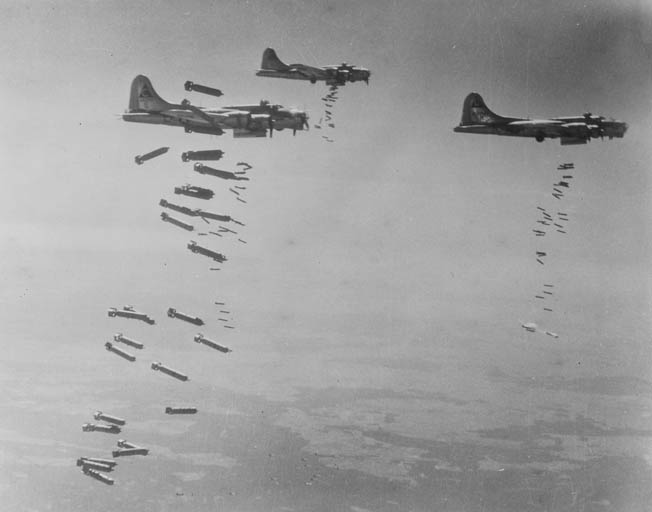
With burning debris and detritus flying around everywhere in the bomber formation, a confetti of metallic junk struck B-17G-35-BO Flying Fortress (42-32085/DF-K) Yankee Belle, piloted by 1st Lt. George F. Miller, and a Vega-built B-47G-40-VE Flying Fortress (42-97959/DF-Y) Rhapsody in Red, piloted by 1st Lt. E.O. Johnson. Both fell out of formation. Miller’s crew bailed out and became prisoners. Rhapsody was sorely damaged but, thanks to Johnson’s ministrations, was able to complete the return flight to England.
Berlin Below
For almost two hours, bombers approached and passed over Berlin. Togglier Ray Fredette aboard Fancy Nancy wrote in his diary that night: “It was a fairly long bomb run. I was fully aware of the entire situation—hundreds of bombers bearing down with tons of high explosives for the bombing of Berlin.
“Berlin! Berlin! The very name of this city pounded on my brains. This was the heart of Naziland. This was the city where Hitler had preached his defiance to the world. This was the city where the throngs had shouted ‘Sieg Heil!’ but today it was the shriek of falling bombs and the rocking explosions that were heard throughout Berlin.”
Fredette continued: “As we approached flying over Potsdam there were large breaks in the clouds over the ill-fated capital. Large portions of Berlin were visible. Smoke was rising from the bomb hits scored by other bomb groups that had preceded us.
“Bomb bay doors were open now and there was flak up ahead. But for the first time I was more intent on the target than the flak. I felt exhilarated. My fingers twitched as I held the toggle [bomb release] switch.
“My eyes were glued on the lead ship. Then its bombs dropped along with two white smoke markers that hurtled downward. This was it. I struck the toggle switch and two tons of explosives in Fancy Nancy’s bomb bay fell away.”
Fredette wrote that the journey out of Berlin was “exhausting.” Yet he never saw a German fighter. Purty Chili co-pilot Robert Des Lauriers noted in his diary that his crew was in the air for eight hours and 30 minutes, a grueling ordeal of cold, vibrations, and dehydration. Des Lauriers thought he saw German fighters in the distance. He noted that the German flak was “exceedingly accurate.”
Although Berlin that day was a tragedy for some crew members, it was easier than earlier strikes on the German capital. Twenty-five bombers and eight fighters were lost to all causes. Eighteen Americans were initially listed as killed in action, with 208 missing. Gunners did not claim any German fighters shot down but eight aerial victories were credited to U.S. fighters.
The American fighter pilots followed revised doctrine and ranged away from the bomber formations to seek out German fighters where they lived. Using new external fuel tanks for the first time, P-47 Thunderbolt fighters of the 56th Fighter Group made their first appearance over the German capital and claimed several aerial victories. The longer ranged P-51 Mustangs that had become the primary escort fighters in Doolittle’s Eighth Air Force strafed German airfields and caught Luftwaffe warplanes when they were most vulnerable, in the airfield pattern.
Results of the Bombing Run
American crew members who had hoped to kill Adolf Hitler were disappointed. They did kill top Nazis, including Berlin’s “hanging judge,” Roland Freisler, who was sitting in his courtroom conducting a trial of conspirators who’d attempted to kill Hitler the previous July. The roof fell in on him, literally.
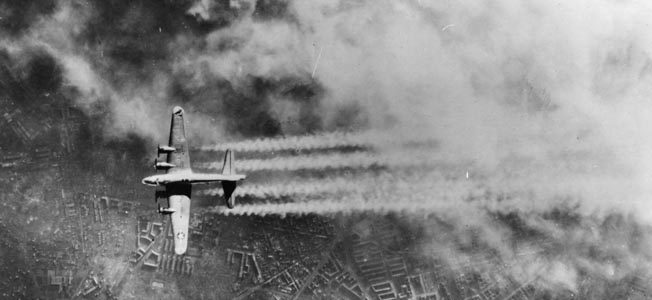
In some sense, what the bombing mission did to Hitler was almost worse than killing him. They drove him underground.
The government quarter of Berlin, already pounded by previous air attacks, was now a smoldering shambles. The February 3, 1945, attack destroyed Gestapo headquarters on Berlin’s Prinz-Albrechtstrasse—previously untouched by the war. Germany’s Air Ministry was left ablaze. The original Reich Chancellery, a neo-Baroque structure dating to Bismarck’s days, still appeared almost undamaged when viewed from the front but had been totally smashed on the inside. The new Reich Chancellery, designed by Albert Speer, sustained bomb damage.
Debris and rubble were strewn everywhere, smoke emerged from government buildings, and bomb craters holed the streets. Hitler was now forced to move permanently into the Führer Bunker located beneath the garden of the New Reich Chancellery. The Führer would see daylight again on only two occasions for the remaining weeks of his life.
According to a U.S. intelligence document from the period, more than 10,000 people were killed on the ground. Hundreds of buildings were destroyed or badly damaged. In the government quarter, water was available only from water carts positioned near the Chancellery. Both the government quarter and large areas of Berlin were without electricity, or had it only intermittently. Transportation, utilities, and infrastructure were badly snarled.
The February 3, 1945, bombing of Berlin was the largest air assault on the German city and the second largest of the war, involving almost 2,400 aircraft and 15,000 men on the American side. (A Christmas Eve 1944 mission by the Eighth Air Force used more men and aircraft against about a dozen separate targets). In some sense, this appearance by B-17s over Berlin was a metaphor for the larger bombing campaign, its results, and the ongoing debate over its effectiveness.
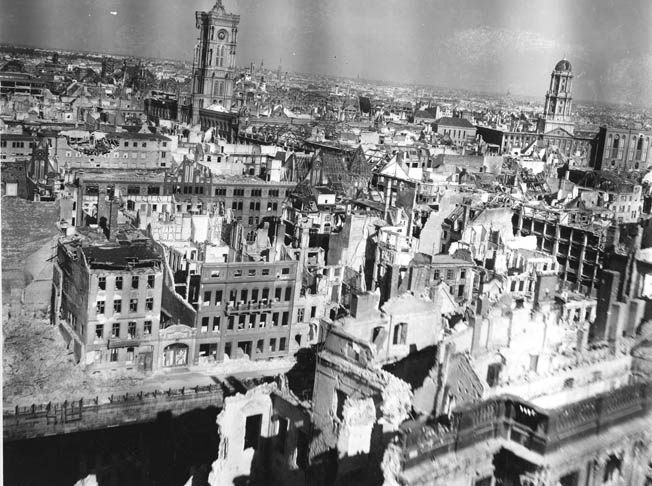
At the time, leaders like Spaatz and Doolittle believed that high-altitude daylight precision bombing was extremely effective. A postwar analysis demonstrated that the bombing was far less accurate than believed at the time. Yet the air campaign tied up tens of thousands of German troops and airmen and several thousand German aircraft that might otherwise have been used against Allied ground forces on both the Eastern and Western Fronts.
Although German industry increased its output during the war—the result of gearing up from a peacetime economy—the bombing had a huge impact on factories, airfields, railways, storage centers, and especially Germany’s capability to produce and refine petroleum.
So did the mission achieve its intended purpose, which was to facilitate the Red Army’s advance toward the German capital? There is no way to accurately measure, but the disruption of activity in Berlin had to help the Soviet forces as they closed in. The postwar Strategic Bombing Survey found that this mission, and others, also eroded citizen morale. Unlike the British during the Blitz of London, residents of Berlin did not gather new strength from being attacked. Instead, they blamed their own institutions, including the Army, the Luftwaffe, and their Führer.
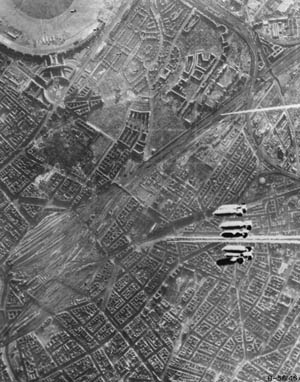
When this giant air battle over and around Berlin ended and the planes came home, there was a final postscript for the crew of, the B-17G-75-BO (43-38031/VN-M) Blue Grass Girl, piloted by 1st Lt. Lewis Kloud of the 486th Bombardment Group. It was testimony to the fickle nature of war.
Every man on Kloud’s crew was flying his 35th mission, the magic number that meant a ticket home. These nine B-17 crew members had defied flak, fighters, and fate and were almost home from their last flight, never touched by the Germans. All looked forward to receiving certificates signed by Doolittle making them members of the “Lucky Bastard Club”—men who’d completed their tour of duty and would now be able to go home. To celebrate this triumph, a member of the crew of Blue Grass Girl grabbed a Very pistol and began firing colored flares out the waist-gun hatch.
The Kloud crew had reason to celebrate. They pulled away from the target. They crossed Europe, crossed the North Sea, crossed the English Channel, and within minutes they would be putting down their landing gear. That’s when crewmembers in a nearby B-17 looked at Blue Grass Girl and saw that it was on fire.
One of the flares had gone off inside the plane. Only two of Blue Grass Girl’s nine crew members were able to jump before the bomber crashed and exploded in a field near Southwold, England––the last casualty of the largest mission by B-17s to Berlin.
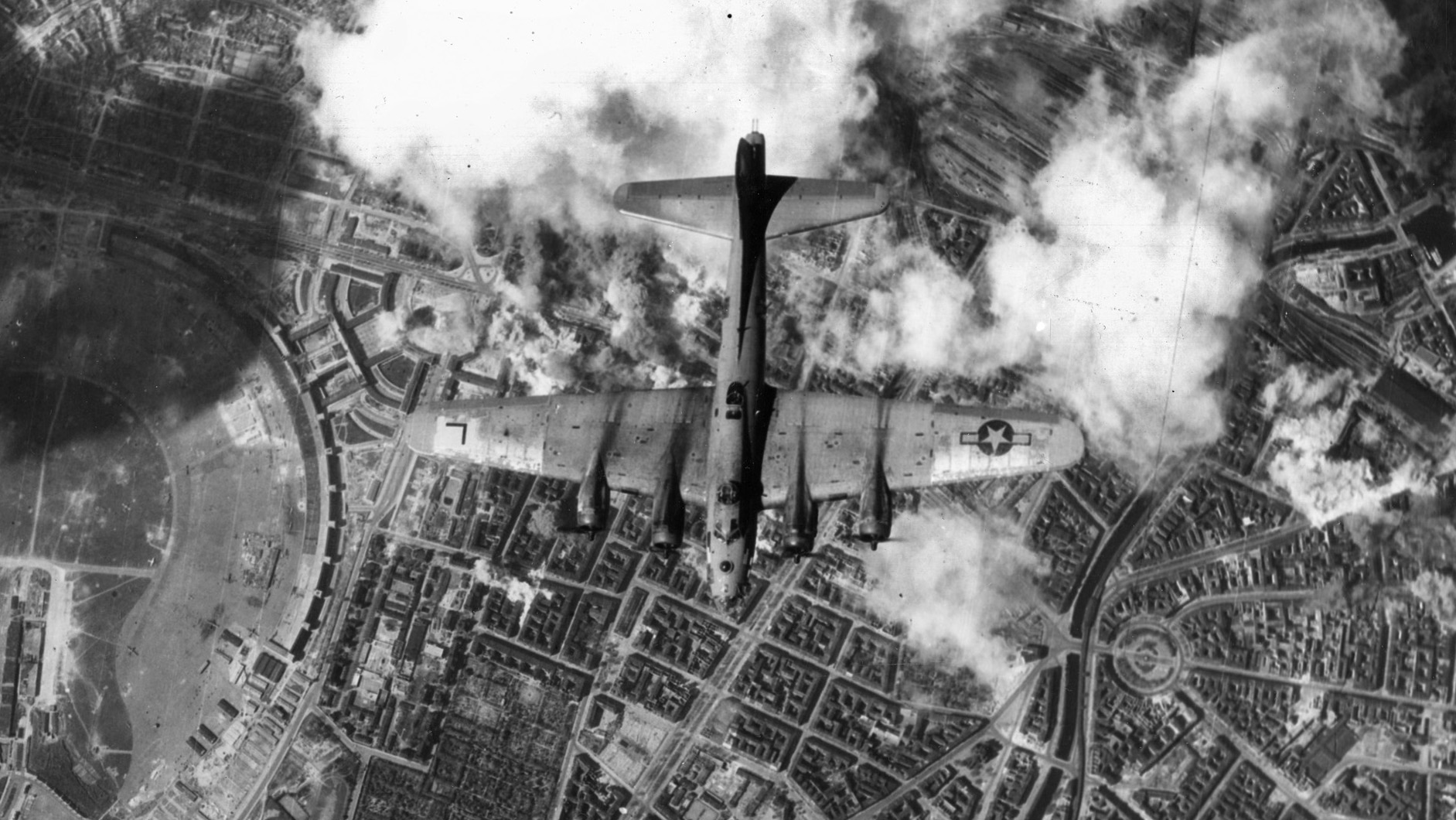
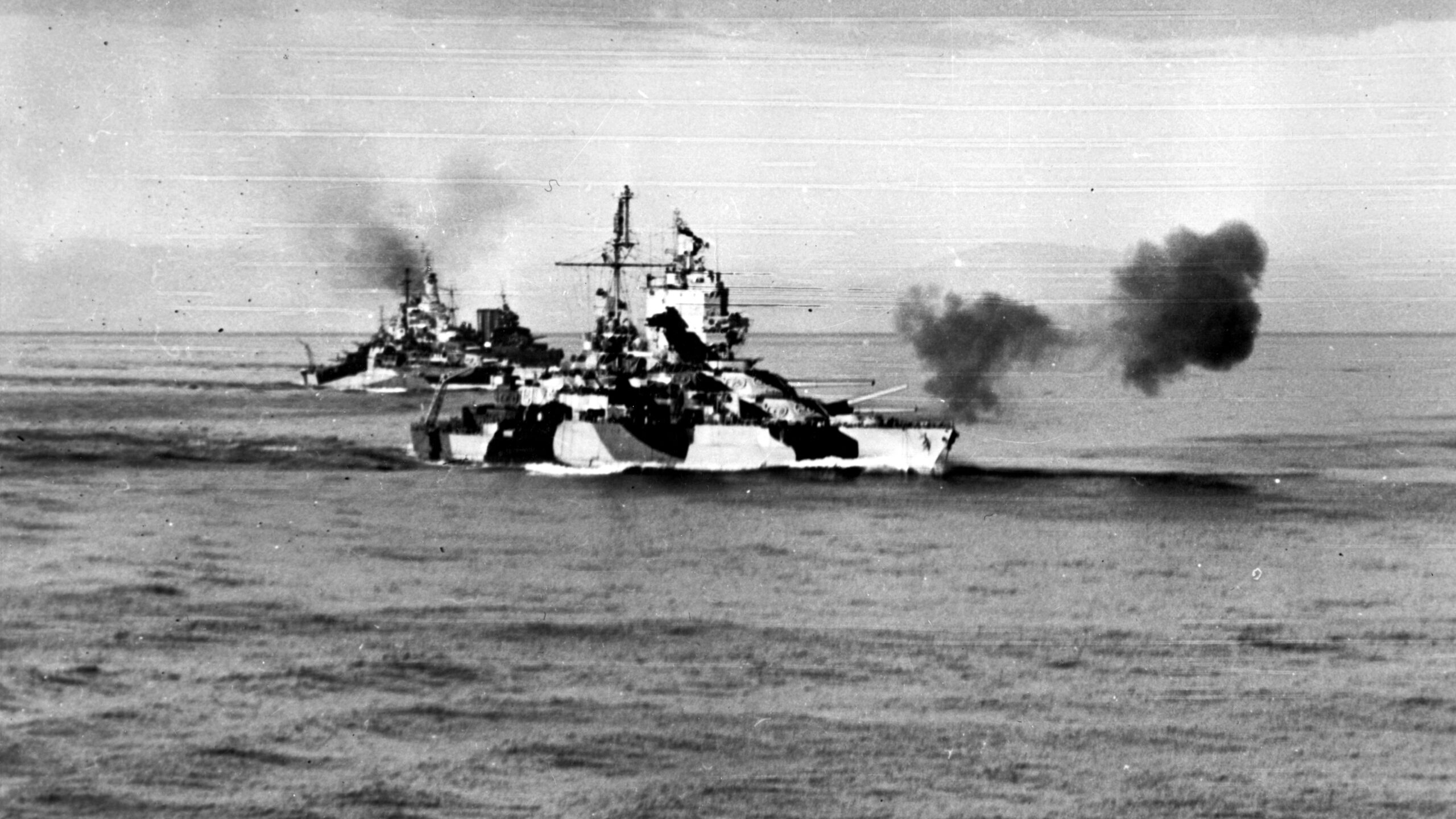
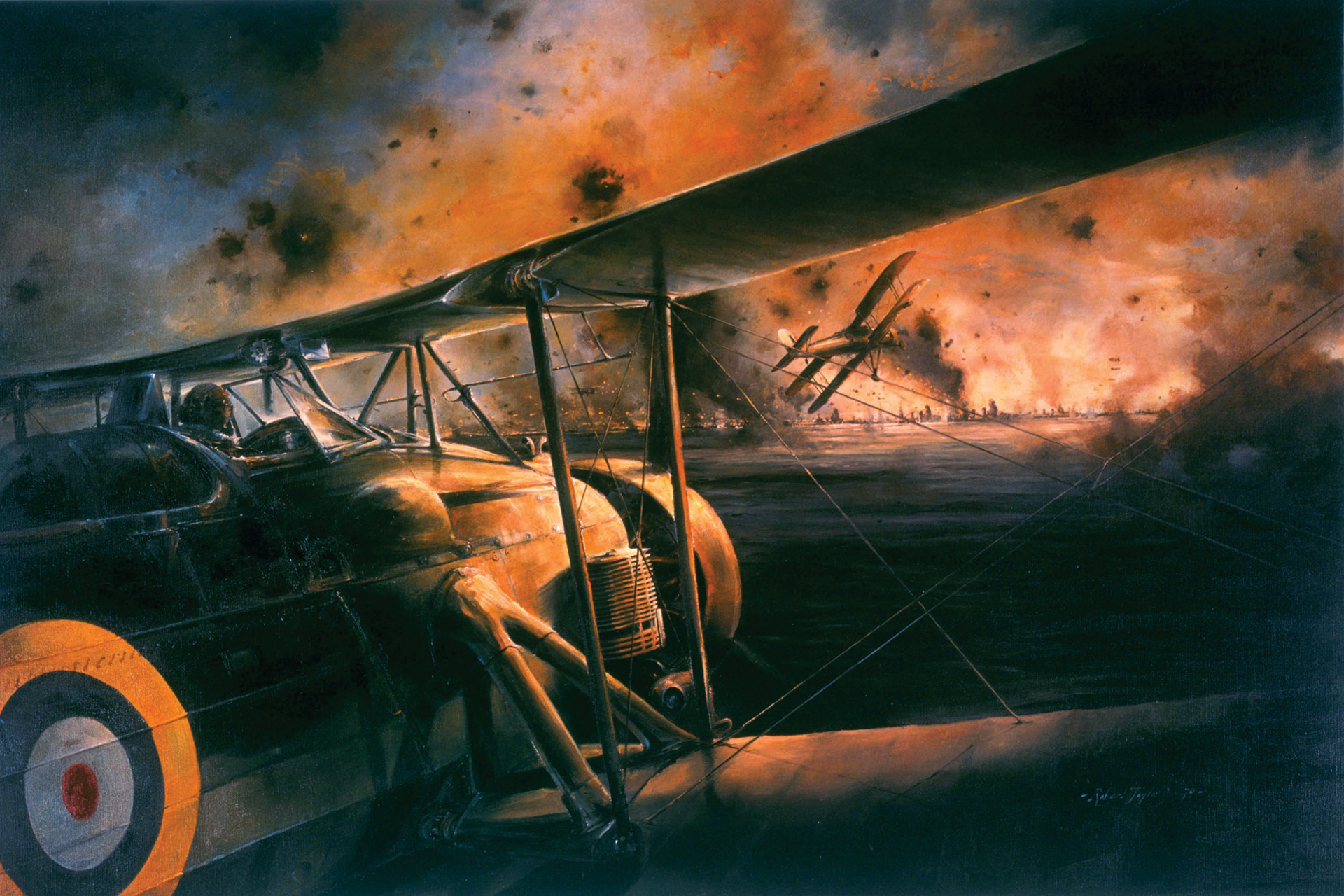

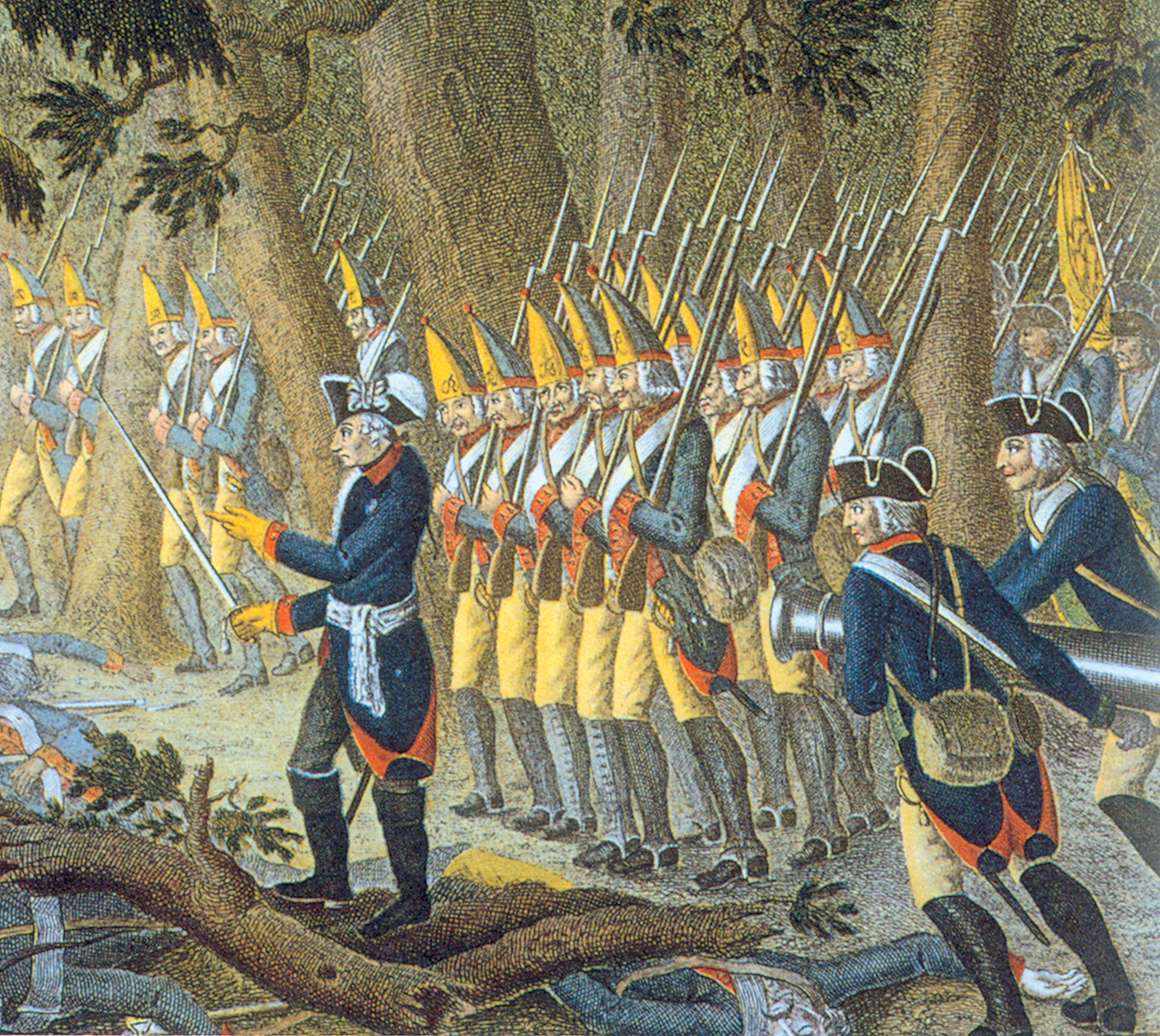
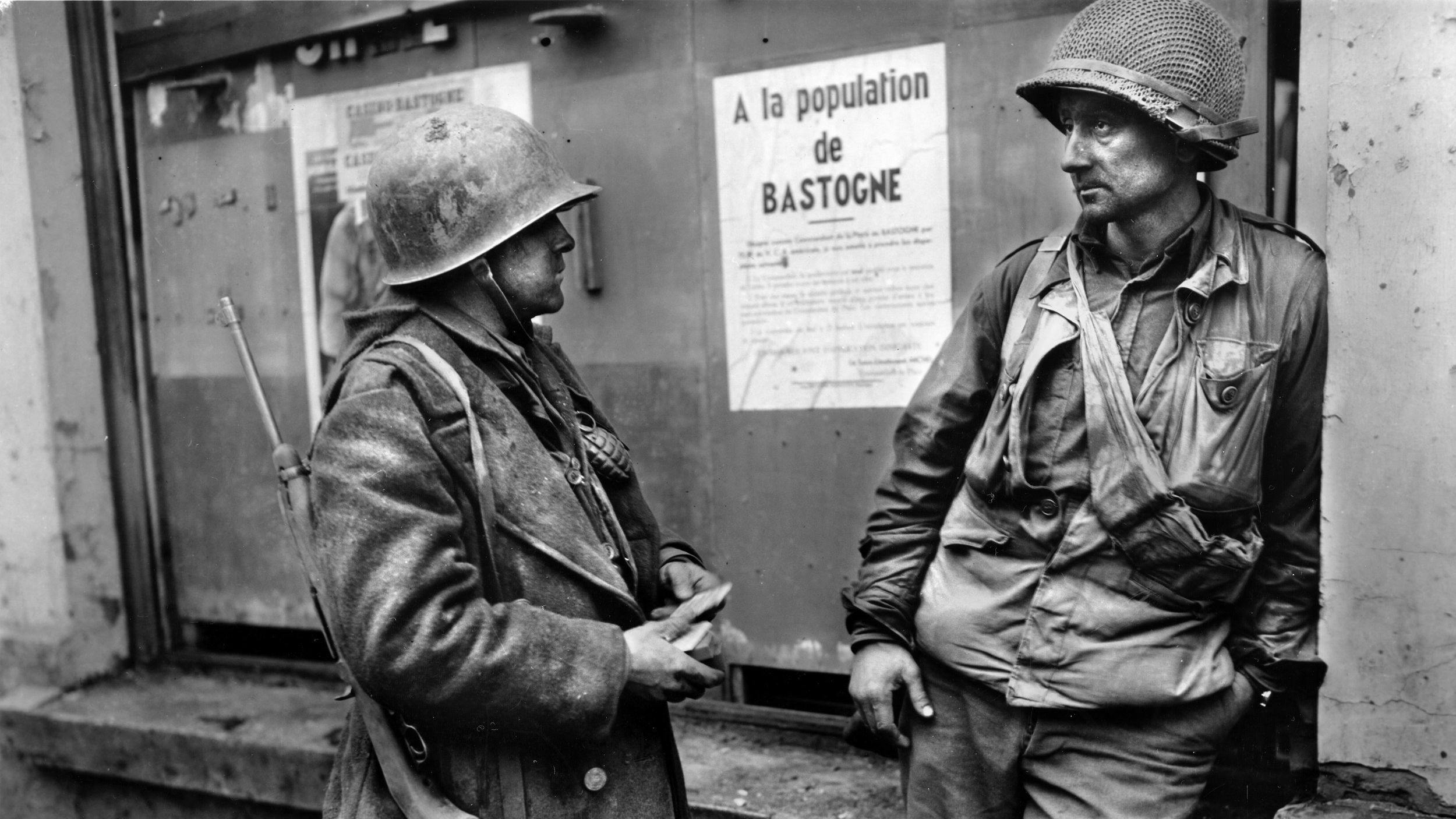
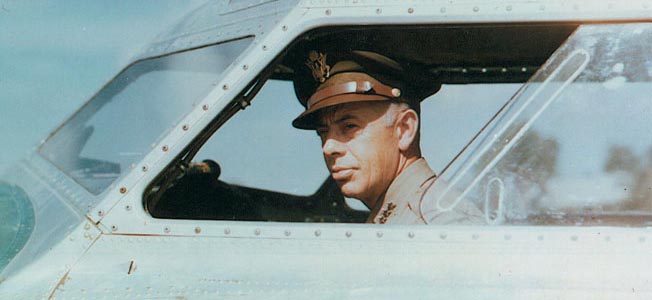
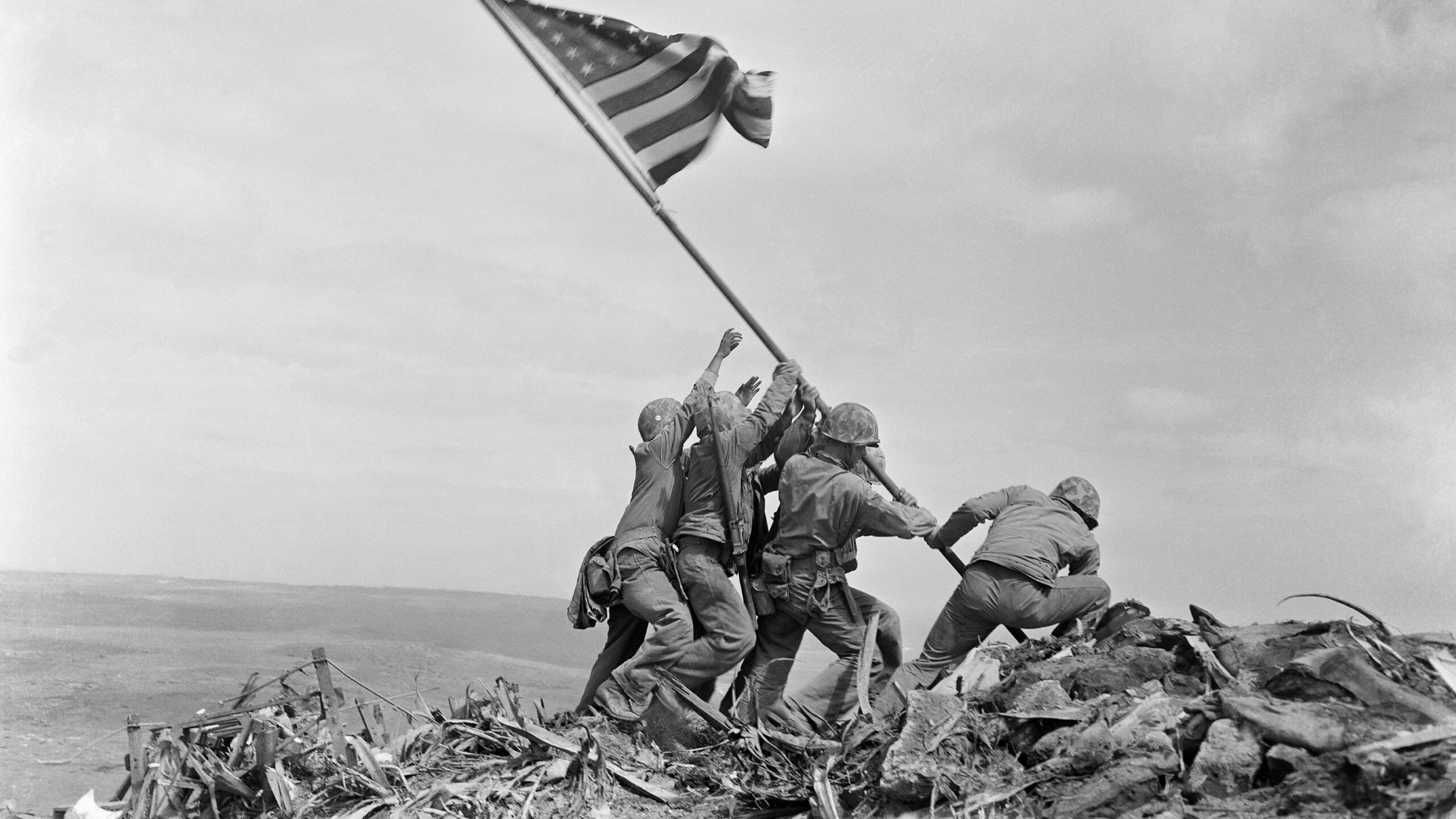
WOW!! A great article – it kept me up past my bedtime, but I could not stop reading about the raid (Gen. LeMay would yell at me). I was 9 years old when the war started so I still have a lot of memories about it from radio (Edward R Murrall, from London) and newspapers. No TV then. I joined the Air Force in Sept 1951 and spent 4 years, 2 years were on Guam. Again I really enjoyed reading the article. Praise the Lord and pass the ammunition and we’ll all be free. I lived in Evansville, Indiana and mom and dad built P-47’s at Republic Aviation, mom was “rosie the riviter”. Jack Cummings
I agree, Jack. That was a great article.
Thanks for sharing your personal information about the war. I was still -(negative)14 years old by the end of the war, so I don’t have much to say about it except I’ve treasured the priceless interactions I’ve had with veterans of the war.
Ray Ross
Amazing article, I’ve always followed the 8th Air Force. I was stationed at RAF BENTWATERS/RAF WOODBRIDGE, ( the twin bases), 82 – 85. We still had quonset huts sparsely around both bases, man, if those huts could talk. It was rumored WOODBRIDGE base was haunted from a buddy of mine that worked MMS, (munitions). Absolutely amazing what these guys went through. the best of the best.
Excellent article. I learned a lot about the bombing over Europe in WWII. This article really personalized it. What courage and skill those aircrews had! My father was on the ground, a Lt. with the 41st Armored Infantry, part of the 2nd Armored Division and was wounded for a second time on Jan. 6, 1945 in Belgium during the latter stage of the Battle of the Bulge. He would have been in a hospital during this raid on Berlin. He survived the war and went on to have a long and successful career as a high school teacher and coach in Kenosha, Wisconsin. He died from “natural causes” in 2003 at the age of 86.
Regarding the Kloud crew at the end of the article, I thought 25 missions was the magic number needed to go home. Is that incorrect, did it change over time, or is 35 a typo?
After being evacuated from Egypt in December 1941, when it seemed likely that Rommel would take the country, my family spent the rest of the war in East Anglia, surrounded by air force bases. So I was very familiar with the sound of bombers flying over us to – and returning from – Germany.
But one morning, the sound was unusual – and much closer than usual.
I ran outside and, sure enough, there was a bomber overhead, so low that I could see the pilot and wave to him – and he waved back!
I often recollect that extraordinary image, hoping that he managed to land safely.